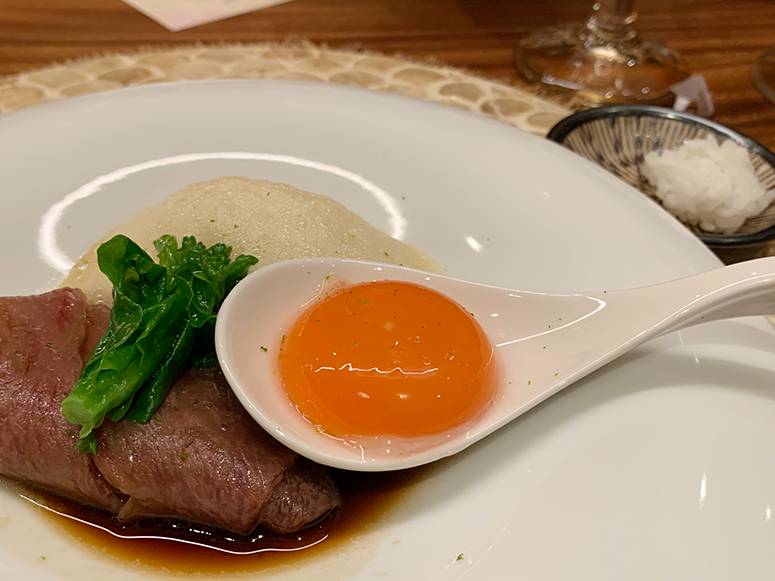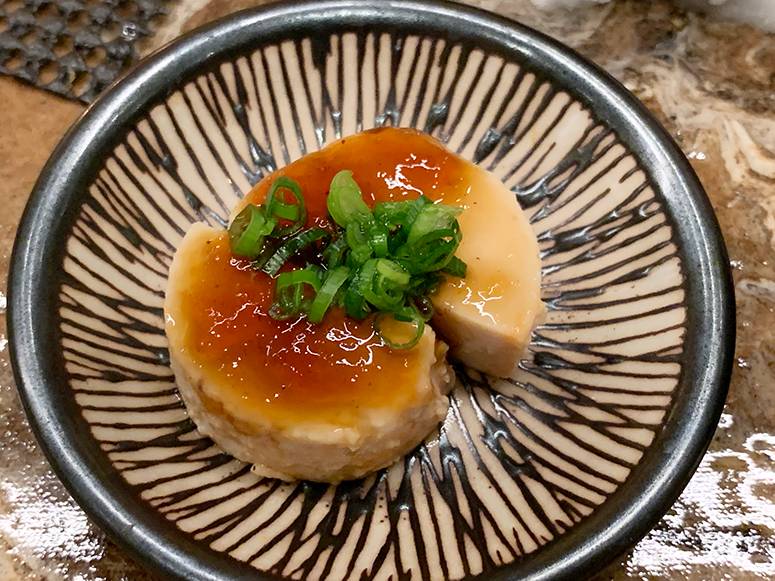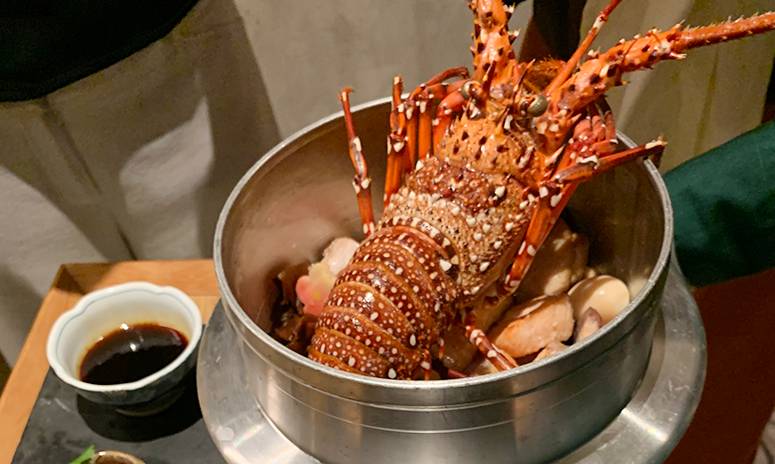Japan’s Omotenashi service brought to your home
For a degustation it hosted recently for the media, Kazunori, a Japanese restaurant, tucked in the first floor of a car dealership building, practically brought half of Japan to the dinner table. There were fresh raw oysters air-flown from Hokkaido, Hitachi Wagyu beef from Ibaraki Prefecture, vegan caviar harvested from Japanese cypress trees, and an extensive accompaniment of wines from the Takeda Winery at the foot of a mountain range in Yamagata Prefecture.
The 12-course menu was a sampling of what Kazunori would serve diners who opt for its Omotenashi service. In Japanese culture, Omotenashi is the highest form of hospitality, where food is served with elegance, grace, and meticulous attention to details. It’s this service that Kazunori offers for private dining.
“There are numerous elements needed to pull off the experience that we hope to bring to our guest’s home,” says Ryan K. Cruz, founder and CEO of Kazunori. First is the menu selection, where the chef discusses dietary preferences with the guest. He’s thereby offered a choice of the finest seasonal dishes such as the creamy, exquisite Bafun uni, Kegani horsehair crabs from Hokkaido, and the highest grades of Wagyu beef.

To complete the service, Kazunori provides the floral arrangements, tablecloths and napkins, as well as elegant dinnerware. With everything fastidiously brought to his home, the guest can enjoy Kazunori’s excellent cuisine without leaving his home and battling Manila’s notorious traffic, Cruz adds.
Head chef Kuramochi Kazunori, after whom the restaurant was named, has had extensive experience in preparing Japanese cuisine. Formerly the executive chef of the Tokyo Hilton, he says his interest in the culinary world was driven by his “deep-seated love for cooking and an intense passion for food.” He has also been inspired by his mother, who was herself an expert noodle chef.
For Kazunori, Japanese cuisine is all about simplicity and balance. The freshness of ingredients is likewise paramount to Japanese cooking. “The foundational elements of soy sauce, sake and salt bring out the depth and harmony in dishes,” he points out.
True to his word, Kazunori made sure these factors were all reflected in the dishes he prepared for our degustation. The oysters flown in from Hokkaido were quiveringly fresh; the presentation of each dish, while being artful, projected simplicity—in the way the uni nonchalantly leaned against the slices of juicy, naturally sweet Kegani crab; or the way the seared clam sashimi peeped invitingly from its enormous shell.

Add to that creativity. No plain sukiyaki here. Instead, we were served its deconstructed version. Folded beside a bowl of bubbling egg foam were thin slices of Hitachi Wagyu beef, which has been rated one of the best beefs in Japan. Underneath was a sweet-savory homemade sauce. A golden-orange egg yolk, shiny as the morning sun, presided over all. Despite its trimness, the beef was succulent, with a meltingly tender mouth feel. According to operations manager Benz Arceo, we were supposed to beat the egg yolk then spoon the foam on top. But we hardly had the heart to break apart the yolk’s perfect roundness. Tucked on the side was a ball of rice, for soaking up all the goodness of the sauce after we had eaten the meat.
As for the tempura, we could tell immediately that it was crackling-crisp. The shishito pepper was studded with multicolored crunchy rice bits, while the fillet of flounder was coated in a golden-yellow batter. On the side lay a scattering of salt for dipping.
Served earlier was the ankimo, or monkfish liver. This, pointed out STAR columnist Pepper Teehankee, is the foie gras of the sea. Indeed, it had the same earthy flavor and silky texture as might be exuded by a goose or duck liver. Also on the menu was a gizzard shad which, contrary to what its name implies, is a fish unique to Japan. Light and delicate, it was luminous against a backdrop of dark seaweed that had been fermented for hours.

The sushi was prepared tableside by Kazunori himself. The rose-colored fatty tuna layered over hand-pressed sushi rice tasted rich and buttery. Beside it was freshly grated wasabi the color of newly sprouted grass. Kazunori brushed the otori, the fattest part of the tuna, with shoyu, then held a metal grill over the fish until appetizing brown grill marks appeared on the surface.
By this time, we were all groaning with fullness. But Benz warned us that more was yet to come. That “more” came in the form of kamameshi, a pot of rice served with a lobster that shimmered like the jewel in a crown.
Someone once said that the key to a good meal is the use of the best ingredients. After a meal as splendid as this, we can only surmise that no one understands that better than Kazunori.


